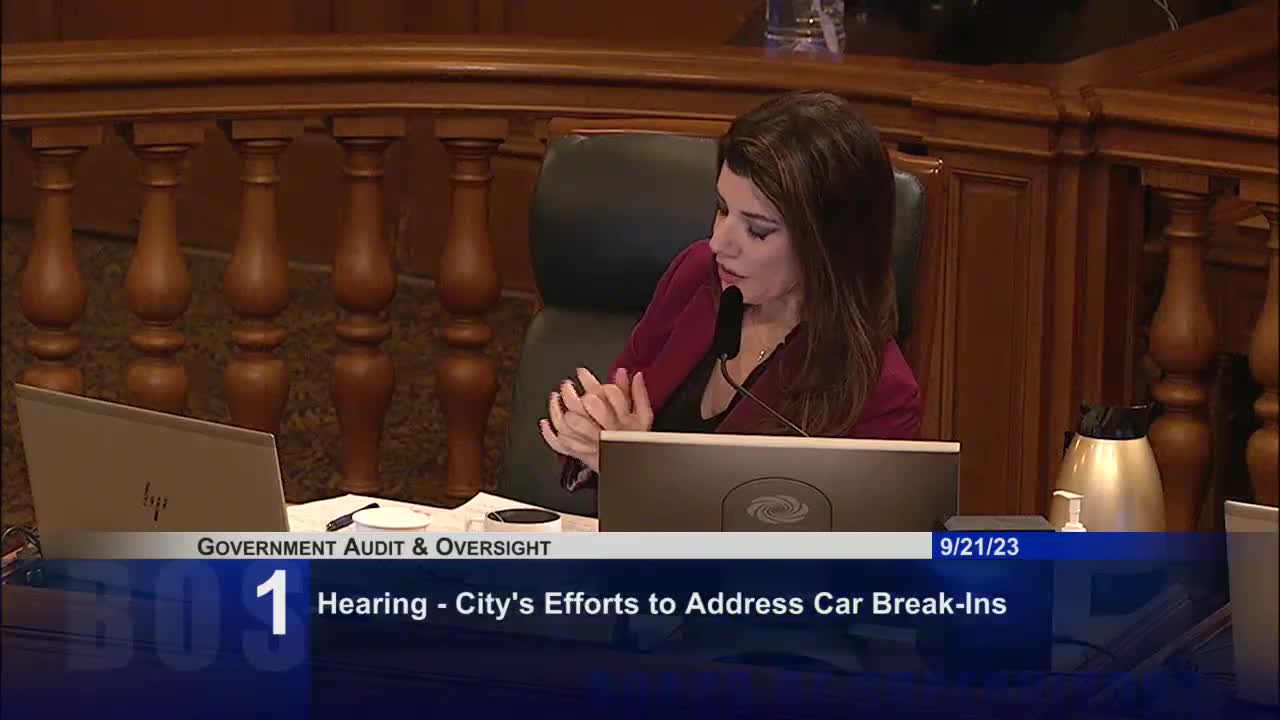SFPD faces challenges with increasing property crime and low clearance rates
September 21, 2023 | San Francisco County, California
This article was created by AI summarizing key points discussed. AI makes mistakes, so for full details and context, please refer to the video of the full meeting. Please report any errors so we can fix them. Report an error »

In a recent government meeting, discussions centered on the challenges faced by the San Francisco Police Department (SFPD) in addressing rising property crimes, particularly the low clearance rates for these offenses. The meeting highlighted concerns about the perception that the SFPD is failing in its duties due to a clearance rate of only 1% to 2%.
A law enforcement official emphasized that this assumption is misleading, given the complexities of property crimes. The official noted a significant increase in cooperation between the SFPD and the District Attorney's office, which is crucial for tackling these issues. However, they pointed out that the nature of property crimes has evolved, with career criminals becoming increasingly adept at committing offenses quickly and efficiently. For instance, it can take less than ten seconds for a thief to break a window and steal items, making it difficult for law enforcement to respond effectively.
The official also addressed staffing shortages within the SFPD, which limit the department's ability to monitor known hotspots for crime. Officers are often required to prioritize responses to violent crimes, leaving fewer resources available for property crime prevention. Additionally, current police commission policies restrict high-speed pursuits for stolen goods, further complicating the department's ability to apprehend suspects.
The discussion also touched on the challenges of gathering evidence in property crimes, as thieves often do not leave fingerprints and frequently switch license plates on stolen vehicles. This complicates investigations and contributes to the low clearance rates.
Overall, the meeting underscored the multifaceted nature of property crime in San Francisco and the need for a nuanced understanding of the challenges faced by law enforcement. As the city grapples with these issues, ongoing cooperation between agencies and potential policy adjustments may be necessary to improve outcomes in property crime investigations.
A law enforcement official emphasized that this assumption is misleading, given the complexities of property crimes. The official noted a significant increase in cooperation between the SFPD and the District Attorney's office, which is crucial for tackling these issues. However, they pointed out that the nature of property crimes has evolved, with career criminals becoming increasingly adept at committing offenses quickly and efficiently. For instance, it can take less than ten seconds for a thief to break a window and steal items, making it difficult for law enforcement to respond effectively.
The official also addressed staffing shortages within the SFPD, which limit the department's ability to monitor known hotspots for crime. Officers are often required to prioritize responses to violent crimes, leaving fewer resources available for property crime prevention. Additionally, current police commission policies restrict high-speed pursuits for stolen goods, further complicating the department's ability to apprehend suspects.
The discussion also touched on the challenges of gathering evidence in property crimes, as thieves often do not leave fingerprints and frequently switch license plates on stolen vehicles. This complicates investigations and contributes to the low clearance rates.
Overall, the meeting underscored the multifaceted nature of property crime in San Francisco and the need for a nuanced understanding of the challenges faced by law enforcement. As the city grapples with these issues, ongoing cooperation between agencies and potential policy adjustments may be necessary to improve outcomes in property crime investigations.
Don't Miss a Word: See the Full Meeting!
Go beyond summaries. Unlock every video, transcript, and key insight with a Founder Membership.
✓
Get instant access to full meeting videos
✓
Search and clip any phrase from complete transcripts
✓
Receive AI-powered summaries & custom alerts
✓
Enjoy lifetime, unrestricted access to government data
30-day money-back guarantee

